Ireland & Britain
England & Scotland
Travel Stories
Interests & Hobbies
Outdoors & Activities
Advice for Visitors
About My Ireland Tour
News & What's On

Welcome to England, an intriguing landscape that seamlessly blends rich history, cultural diversity, and iconic landmarks. From the bustling metropolis of London to the tranquil beauty of the Lake District, England offers an abundance of destinations that cater to every taste. Immerse yourself in the world-class museums and historic monuments, as well as the modern innovation and epic scenery.
Join us on a journey through England's top attractions, where tradition meets modernity, and each step of the way reveals more about this fascinating land. Its people are proud of their country and its history, and upon seeing such attractions as Stonehenge and Buckingham Palace, it's easy to see why.
Below is our list of the 20 essential attractions for your time in England.
The Houses of Parliament building is home to the House of Commons (elected by the public) and the House of Lords (based on family lineage). Officially known as the Palace of Westminster, The Houses of Parliament is where the British Government meet to pass legislation, debate opposition practices, and generally debate the pressing political issues of the day. It is also one of the most distinctive landmarks of London, thanks in no small part to part to its most iconic structure Big Ben.
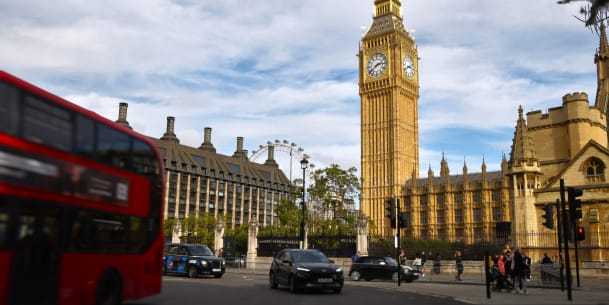
Elizabeth Tower, more affectionally known as Big Ben (Big Ben is actually the name of the 13.7-tonne bell within the tower, and is barely invisible from outside), was added as part of the restoration works after a fire ravaged The Houses of Parliament in 1834. The tower was completed in 1859 and has been chiming merrily to the people of London ever since — although it was largely silent for the 5 years between 2017 and 2022 when it underwent a major restoration project.
For a great view and great photos of Big Ben & The Houses of Parliament, Westminster Bridge is ideal. Cross the bridge, heading east, away from Big Ben. This will give you the River Thames as your foreground, and the iconic building and clock as your background.
First built over 5,000 years ago, and taking an estimated 1,000 years to construct, experts are today still unsure of the exact reason why Stonehenge was built. While they know it was used as an astronomical clock, the time and effort afforded to its construction tells them there must have been something more meaningful to the Ancient Britons who placed it here. Around 3000 BC, the first stage of Stonehenge's existence was created. With 56 chalk pits, used to house cremated remains, laid out in a ring formation of over 330 feet in diameter. Some 500 years after this, the huge sarsen stones used as the iconic trilithons (the two large vertical stones, and the one horizontal stone they support) were put in place, having been somehow transported from over 20 miles away.
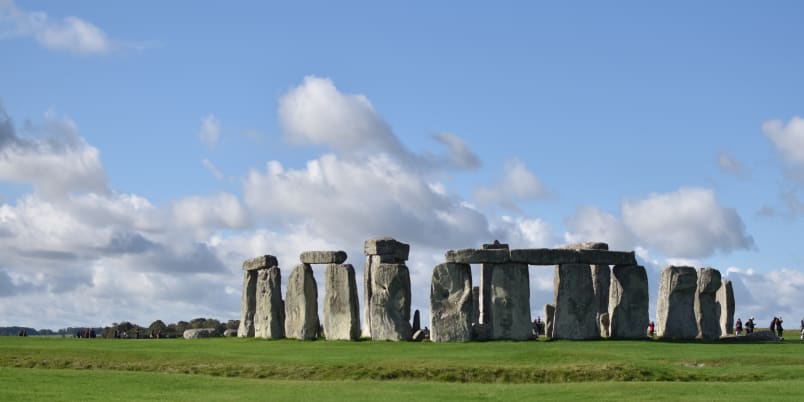
Today, close to the site of Stonehenge, you find the Stonehenge Visitor Centre. Here, you can get a detailed audiovisual breakdown of the site's development, as well as its solar alignments. There are also displays featuring items found at the site over the years, including antler picks (used to dig out pits)and arrowheads. Best of all, there's a 360-degree projection of Stonehenge, showing the changing of the seasons and the midsummer sunrise as seen from the inner circle of the site.
The bus system, taking you from the Visitor Centre to the Stonehenge site, and back, can be very busy. You find it quicker though if you arrive before 11am, or after 2pm. This is especially true during the summer holidays, and other school holidays throughout the year.
From the visitor centre, you are taken to the Stonehenge site by bus. this takes about 5 minutes, and buses are running to and from every 5 minutes or so. At the site, you have the opportunity to walk 360 degrees around its path. Once you get the bus back to the visitor centre, you can grab a coffee and a snack from the café, use the restroom and buy some Stonehenge-related trinkets from the gift shop.
Stonehenge is open from 9.30am to 5:30pm daily. With last entry at 3.30
Prices of a ticket to Stonehenge range from £23.00 for an adult to £14.00 for a child.
Buckingham Palace is the British Royal Family's premier residence since 1837. It was first built in 1703 for the Duke of Buckingham, and was later acquired by King George III. The palace today is made up of a total of 755 rooms. These include 52 Royal and guest bedrooms, 188 staff bedrooms, 92 offices and 78 bathrooms. The 19 State Rooms are open to the public between July and September, while the King is away for the summer holidays. These rooms are always a popular visit, and are adorned with extravagant decor and priceless art.
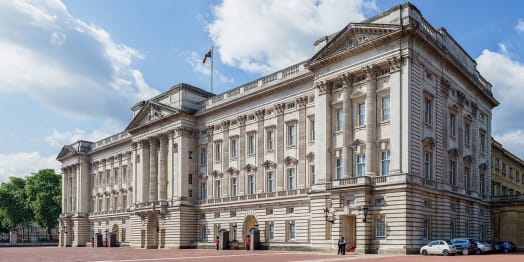
Even if you're near Buckingham Palace outside of the summer months, it is still worth the visit. While you won't have the chance to go inside, a walk through its mall is a treat at any time of the year — particularly on Sundays when it becomes a traffic-free zone.
The Changing of The King's Guard takes place on Mondays, Wednesdays, Fridays and Sundays from August to May, and daily from June through July. This is the ceremony that sees the palace guards (Yeomen Warders, also known as Beefeaters) change shifts. The Changing of The King's Guard starts at 10.45am and lasts for 45 minutes.
To see The Changing of the King's Guard, you should arrive as early as possible. You can see the Soldiers gather at St James's Palace and Wellington Barracks from 10am, reaching Buckingham Palace at 10.45am. For the best view, getting a spot outside Buckingham Palace at around 9am is advisable.
For tours inside Buckingham Palace (only available between July and September), you should arrive 30 minutes before the entry time of your ticket. Photography of any kind, as well as eating and drinking, are not allowed inside the palace — except for bottled water. Bathrooms are available for use at the start and end of your tour.
From the 14th of July to the 31st of August, The State Rooms of Buckingham Palace are open to the public from 9.30am to 7:30pm.
From the 1st of September to the 24th of September, The State Rooms of Buckingham Palace are open to the public from 9.30am to 6:30pm — with the last entry at 4pm.
Prices of a ticket to The State Rooms of Buckingham Palace range from £32.00 (online price) and £32.00 (on the day price) for an adult to £16.00 (online price) and £17.50 (on the day price) for a child. Entry for children under 5 is free, but a ticket is required.
Forming the heart of the UNESCO World Heritage city of Bath, The Roman Baths have lured visitors to their warm waters for almost 3,000 years. In 863 BC, according to legend, Prince Bladud founded the city after his pigs were miraculously cured of leprosy from the mineral-rich mud of the hot springs. There is evidence of human settlements here dating as far back as 8,000 BC, but it was the Romans who turned the baths into a social haven during the 1st century AD.
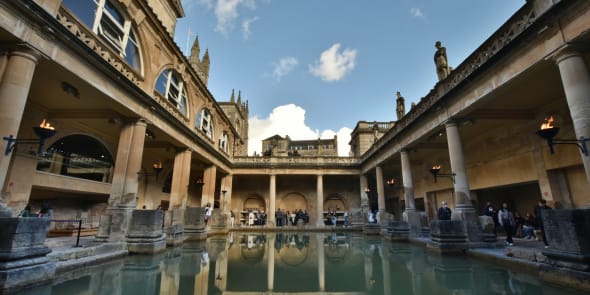
The Roman Baths today stand as a testament to the Roman architecture of the time, and one of the most popular historic sites in Britain. From the reception hall, where you can pick up your personal audioguide, you can make your way onto the terrace overlooking the Great Bath. The terrace is decorated with statues of Roman emperors and British noblemen dating from 1894. The Great Bath is a 5-foot-deep pool of hot spring water and is lined with 45 sheets of lead.
The Terrace and the Great Bath are just the tip of the iceberg though. The rest of the site extends below the modern-day streets and squares that surround it, and are a treasure trove of ancient Roman artefacts. A series of CGI reconstructions and projections show you how the baths would have looked during the peak of its popularity. As a haven for relaxation and leisure, the Romans even installed saunas, changing rooms and plunge pools that are still visible today.
For a exploration of Bath on foot, check out our our Bath City Walking Tour page.
90 minutes to 2 hours will give you plenty of time to explore The Roman Baths in full. If you are only stopping in Bath City for a day, we would highly recommend setting aside a couple of hours to take a walk around. The golden Bath stone used on the majority of the city's buildings is a joy to behold — especially on a sunny day. And, while the hot spring water offered at the end of the tour isn't exactly refreshing, the ice cream from the numerous gelateria nearby certainly is!
Photography is allowed in all sections of the baths, however, the use of tripods is not, as they can form an obstruction to other visitors. Some of the floors, especially around the Great Bath, are uneven and feature cobblestones. This may cause issues for people with mobility issues. 90% of the site is wheelchair accessible, and anyone accompanying a disabled visitor can join the tour for free.
On weekdays, The Roman Baths are open from 10am to 6pm — with the last entry at 5pm.
On weekends, The Roman Baths are open from 9am to 6pm — with the last entry at 5pm.
The Roman Baths are closed completely on the 25th and 26th of December.
Prices of a ticket to The Roman Baths range from £18 for an adult to £10.50 for a child.
Westminster Abbey is what's known as a Royal Peculiar. It is not officially an abbey, and it does not fall under the ownership of the Church of England. Instead, it is set aside as a subject of the British Crown. Every English sovereign, since William the Conqueror in 1066, has been crowned here — with the exception of Edward V and Edward VIII, who were murdered and abdicated, respectively, before they got the chance.
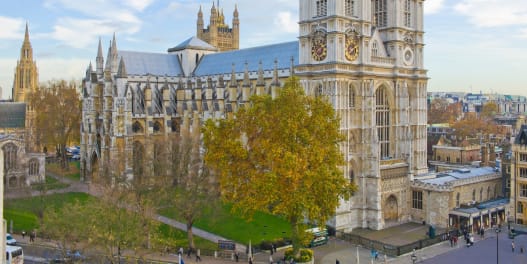
The majority of the Westminster Abbey, that we see today, was constructed during the 13th century, although its origins date back to circa 960 AD. Through the years, it has also been the location for 16 royal weddings and numerous royal funerals. Including, in recent years, the wedding of Princess Catherine and Prince William in 2011, and the funeral of Queen Elizabeth II in 2022.
Highlights of the tour include the many royal tombs, including those of Mary Queen of Scots, the Boy King Edward VI and Queen Elizabeth I. As well as the graves of notable 'commoners' in Poets' Corner and Scientists' Corner. Poets' Corner features the graves of Geoffrey Chaucer and Charles Dickens, and memorials to William Shakespeare and Jane Austen. While Scientists' Corner includes the final resting places of Stephen Hawking, Sir Isaac Newton and Charles Darwin.
If you want to get a few photos of the abbey, without massive crowds of people in them, the only way is to get there for the first time slot (9.30am), and be the first in the queue!
Photography is allowed in the abbey, except in the Shrine of St Edward the Confessor, St Faith's Chapel or The Queen's Diamond Jubilee Galleries or at any time during service. In the winter months, the abbey can be quite cold so an extra layer of clothing may be needed. Parts of Westminster Abbey's floors and steps are uneven, so suitable footwear is recommended.
From Monday to Friday, Westminster Abbey is open from 9.30am to 3:30pm.
On Saturdays, Westminster Abbey is open from 9.30am to 3pm.
Westminster Abbey is closed to visitors on Sunday (but open for worship and prayer)
Prices of a ticket to Westminster Abbey range from £29 for an adult to £13 for a child. Entry for children under 6 is free.
Windsor Castle overlooks both the towns of Eton and Windsor (The wealthiest town in Britain, and home to more than 250 multi-millionaires). The site of the castle was originally chosen by William the Conqueror in 1070, with its construction lasting until 1086. It was built to guard the Western approach into London. In 1992, during what Queen Elizabeth II called her 'annus horribilis', or horrible year, a fire broke out in Windsor Castle and burned for 15 hours — destroying 115 of the castle's rooms. To cover some of the cost of the rebuild, the Queen started to pay income tax in 1993, making her the first British monarch, since the 1930s, to do so.
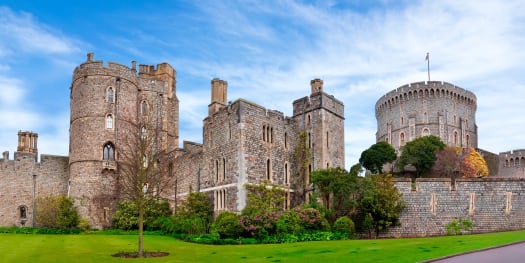
Having been the home of 40 monarchs, Windsor Castle is both the largest and oldest occupied castle in the world. It is open throughout the year to the public, and offers a fascinating look into the day-to-day lives of British Royalty. Highlights of the tour include the ceremonial rooms, especially the Grand Reception Room, which uses real gold to decorate its walls and ceiling, and is adorned with stunning chandeliers. A favour with both kids and adults alike is Queen Mary's Dolls' House — a present to Queen Mary in 1924, the miniature rooms feature art, books, furniture and even running water and electricity!
On the castle grounds, you can also explore St George's Chapel, the final resting place of Henry VIII and Queen Elizabeth II. And, on Thursdays and Sundays, there's also the chance to see the Changing of the Guard ceremony.
If you're flying into Heathrow airport, the town of Windsor will be closer to you than central London. If time allows, you can take a 10-minute car ride here, before starting your exploration of London and beyond.
Windsor Castle sits on top of a steep hill, and the visitor path covers a considerable distance, so comfortable footwear is advisable. Anywhere between 1½ and 2 hours would be plenty of time to see the highlights of the castle.
On Thursday to Monday, Windsor Castle is open from 10am to 4.05pm — and the castle is closed completely on Tuesdays and Wednesdays.
Prices of a ticket to Windsor Castle range from £28.00 for an adult to £15.50 for a child. Entry for children under 5 is free.
The town of York was first established by the Romans circa 71 AD, and was originally known as Eboracum. Relics and artefacts continue to be unearthed to this day, and it is said that only about 3% of York's subterranean Roman history has been discovered. During the 9th century, the town was the capital of the Anglo-Saxon kingdom of Northumbria, until it was seized by the Vikings — who renamed the town Jorvik.
York Minster was first constructed as a wooden church for the baptism of King Edwin of Northumbria in 627 AD. This church was replaced with a Roman-style basilica, parts of which are still visible today in the minster's foundations. Other surviving elements include remnants in the crypt and foundations of the first Norman minster, built here during the 11 century.
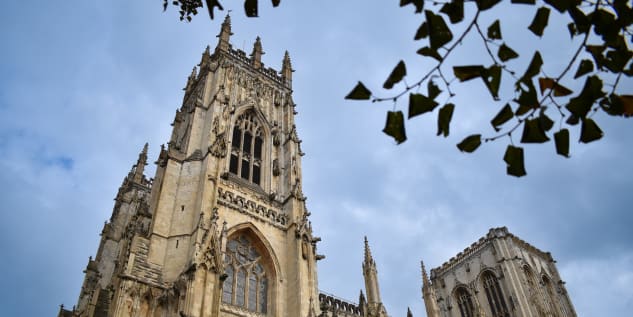
The church of today was built 1220 and 1480, and stands as a visual record of key phases of Gothic architectural evolution. Enjoy a journey back almost 2,000 years through the structure's history, through an interactive exhibition in the Undercroft Museum — York Minster Revealed. And, see the magnificent skyline of York City stretching into the distance, from the minster's tower.
If you'd like to see more of York on foot, take a look at our York City Walking Tour page.
The minister is very well signposted from within. Some people never even realise that the Undercroft Museum exists. It is located next to the south entrance, and down the stairs.
Reaching the top of York Minster's tower (the highest point in York) takes 275 steps, and is not suitable for those with mobility issues. Visits to the tower cost an additional £6. If York Minster is the main reason for you to stop in the city, be sure to set aside some time to wander through the city as well. It's half-timber buildings and narrow alleyways are a joy.
On Mondays to Saturdays, York Minster is open from 9.30am to 4pm — and on Sundays, from 12.45pm to 3.15pm
Prices of a ticket to York Minster range from £16 for an adult to £13 for a child.
Often voted as Britain's favourite national park, and with 885 square miles of dazzling beauty, the Lake District is awash with outdoor adventures and fascinating history. Once described by the Romantic poet Daniel Defoe as being "barren and frightful", it wasn't until the mid-19th century that the terrain began to be appreciated by those outside its borders. Today, the Lake District is one of the British Isle's most popular tourist destinations and attracts almost 16 million visitors every year.
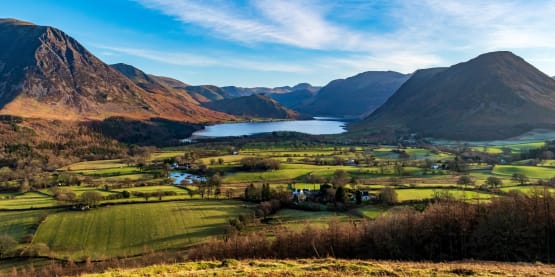
This influx of visitors was aided in 1987 with the introduction of a railway to the Lake Districts' Windermere region. Windermere is England's largest lake, and its waters as well as its surrounding areas are the district's most visited sites. The Lake District is essentially a series of lakes connected with breathtaking scenery. Each one is as distinct and visually stunning as the next. Other notable areas of the Lake District include Wastwater, England's deepest lake, Wasdale valley, and Ullswater (the daffodils here being the inspiration for Wordsworth's poem - I Wandered Lonely as a Cloud).
There are numerous ways to travel to (train, coach, car) and around (rail, car, boat, etc.) the Lake District. In an ideal world, a rental car to and from the district is the most effective way to travel — using the steam engine railway and boat services to explore further. To get the most out of a visit, you would probably need a stay between 3 to 5 nights.
First built during the 1880s, as a much-needed crossing point in East London, Tower Bridge has gone on to become one of the city's most popular landmarks. Using materials from across Britain, including stone from Portland, steel from Glasgow and granite from Cornwall, the two iconic Gothic towers were first erected in 1894 — and were originally a chocolate-brown colour. The ground-breaking feature of the tower was the steam-powered roadway raising. Taking only three minutes to raise, and allowing ships to pass between the two towers, it was a modern marvel of engineering for its time.
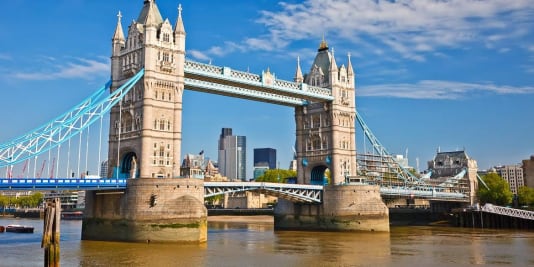
Today, the bridge is raised via electricity and rises 800 times a year, on average. While the outside views of the bridge are why people are drawn to the attraction, the interior today is also worth a visit. Featuring a 36-foot-glass walkway of the Tower Bridge Exhibition, located 137 feet above the River Thames, as well as an audio-visual guide taking you through the bridge's construction and history.
On the glass walkway, within the bridge, is where you'll get the best views of the bridge being raised (10 times a day during the summer months).
Today, it only takes 86 seconds to raise the bridge and it's a fantastic sight both inside and outside. For those with mobility issues, Tower Bridge is fully accessible, and there is lift access to all levels.
Tower Bridge is open daily from 9.30am to 6pm.
Prices of a ticket to Tower Bridge range from £12.30 for an adult to £6.20 for a child.
Also known as the 'Palace of the Peak', Chatsworth House is located 3 miles northeast of the charming village of Bakewell. Since 1552, it has served as the residence for the earls and dukes of Devonshire. There is a priceless collection of paintings and period furniture housed within its wall. Set upon 25 square miles of meticulously landscaped grounds and ornamental gardens, parts of which were designed by renowned gardener and landscape architect Lancelot 'Capability' Brown during the 18th century.
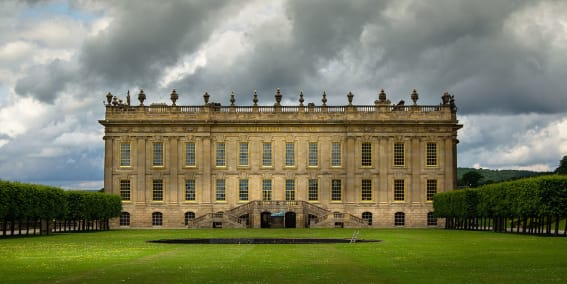
A tour of the expansive Chatsworth House and its gardens include some of Europe's most precious art pieces, a working farmyard and acres of pristine gardens and water features. This is the Peak District at it most sublime. In the 1995 film adaption of Jane Austen's Pride and Prejudice, Chatsworth House was used as Pemberley, the residence of Mr Darcy.
For those with kids of a certain age, who may not be too entertained by mural-adorned staterooms and opulent apartments, the farmyard adventure playground is sure to keep them occupied. There is also a café, located just outside the gift shop that serves, possibly, the greatest sausage roll in all of Britain.
Photography is not allowed within Chatsworth House and Gardens, but it is not to be used for any commercial purposes.
Chatsworth House is open daily from 10am to 5:30pm.
Prices of a ticket to Chatsworth House range from £34 for an adult to £19 for a child.
Stratford-upon-Avon, a charming town in the West Midlands, boasts Tudor-style homes and a picturesque winding river. But, its real claim to fame is being the hometown of the legendary playwright William Shakespeare. Born in 1564 and raised on Henley Street in Stratford, along with his seven siblings. After his father John's passing in 1601, William inherited the family home. He later turned it into an inn called the Swan and Maidenhead, an establishment that endured until 1847.
While the exact date of Shakespeare's departure from Stratford-upon-Avon remains uncertain, historical records indicate his presence in London during the 'lost years' from 1585 to 1592. He eventually returned to his hometown in 1611. On April 23 of that year, also believed to be the date of his birthday, Shakespeare passed away at the age of 52.
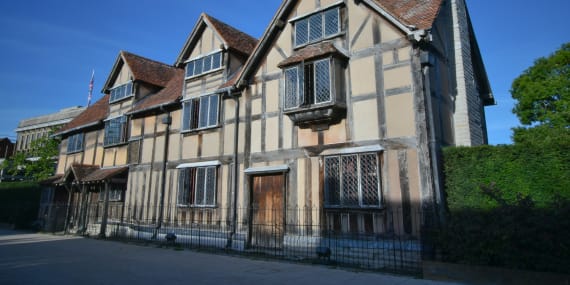
Today, you can walk through the impeccably maintained house where Shakespeare was born and raised. See his father's glove-making workshop, the family's kitchen table, and the bedroom where a young William shared a small bed with his three brothers, as well as many other carefully preserved artefacts. You are greeted in each room by an enthusiastic volunteer (dressed in period clothes) who will give you a detailed breakdown of its contents and history. Outside the house, there is a sculpture garden, a cottage garden, and orchards. There is also a miniature stage, where you can see actors showcasing some of the Bard's most famous works.
If you'd like to explore Stratford-upon-Avon on foot, take a look at our Stratford City Walking Tour page.
The real treats in Shakespeare's Birthplace are somewhat hidden. There are the signatures sketched on the windows, a Tudor tradition performed by visitors to a house, including Sir Walter Scott's and Charles Dickens'. The more you chat with the volunteers, the more secret nuggets they'll divulge! For those looking to research Shakespeare's life and works further, there is a comprehensive book/gift shop alongside the garden.
Shakespeare's Birthplace is a hugely popular destination for school tours, and tourists in general. As the house is relatively small and many of its doorways narrow, you can expect it to take about 30 to 40 minutes to walk through — longer if you'd like to stop and chat with the volunteers. There are several steep and narrow staircases within the house, and they may not be suitable for those with mobility issues.
Shakespeare's Birthplace is open daily from 9.30am to 6pm — with the last entry at 3:30pm.
Prices of a ticket to Shakespeare's Birthplace range from £20.00 for an adult to £10.00 for a child. Entry for children under 3 is free.
Having transformed itself from a sleepy Lancashire burrough in the 1700s, with a population of around 9,000 residents, to a powerhouse of The Industrial Revolution, the city of Manchester today is home to 552,000 people with a further 2.87 million living in its border regions. Since the boom of The Industrial Revolution, Manchester has faced it numerous socio-economic challenges, but is today enjoying a resurgence to its former glory.
The reason Manchester boomed during The Industrial Revolution was its complex series of canals, which saw the easy importation of goods, mainly cotton, to its shores. The city's historic warehouses and mills of this era have been renovated to form modern apartments and offices. Mixed with its recent tenacity to build upwards, with the skyline dotted with impressive skyscrapers, the locals affectionately refer to the city centre as Manc-hattan.
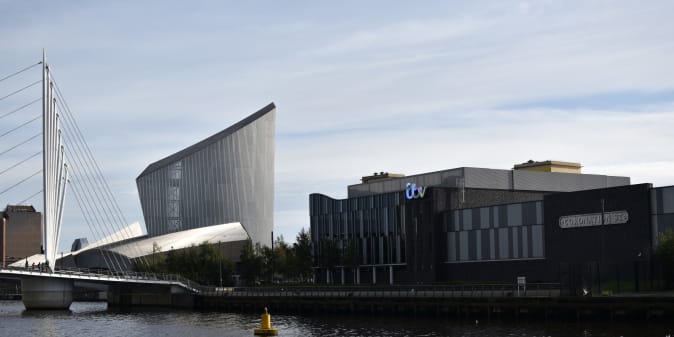
You can explore these famous waterways, jutting out from the River Irwell, onboard a canal boat departing from the city centre and back. With the help of a loud and crystal-clear audio commentary, you'll set sail through the waters of Manchester City and see both its history and its modern facelift first-hand. The canal boats have seating in two sections. The warm and cosy downstairs sections, and the open-air top deck. Be warned, Manchester is known for its rain (any time of the year), and its cold (autumn and winter months!). If the weather is nice, the upper deck is well worth it. There's tea, coffee and snacks available throughout, and it's a great way to get the full history of the city without having to traverse the complex footbridges and pathways.
Have your camera ready for Gnome Island, aka Troll Island, a small concrete block with a series of troll dolls glued onto its surface. You'll pass this twice and it's located about five minutes from the start and end of the tour.
Boarding and leaving the boat is via small, narrow stairs. This might be troublesome for those with mobility issues. The boat tour is not accessible for people in wheelchairs. The tour takes, on average, 1 hour and 15 minutes, but you can get off whenever you'd like at certain designated stops.
Manchester River Cruises runs daily from the start of April to the end of September.
Prices of a ticket to Manchester River Cruises range from £9 for an adult to £5 for a child.
London is a city of continuous progress with a deep-rooted and proud history. It can be quite daunting in sheer size by those new to it, and it's best thought of a series of different villages rather than a sprawling metropolis. This is how the locals view it, villages, each with its own distinct character, that come together to form one of the world's most diverse and interesting cities. It currently has over 10 million residents from 270 countries, speaking over 300 languages. It's this diversity that has seen London continue to develop and flourish over the centuries.
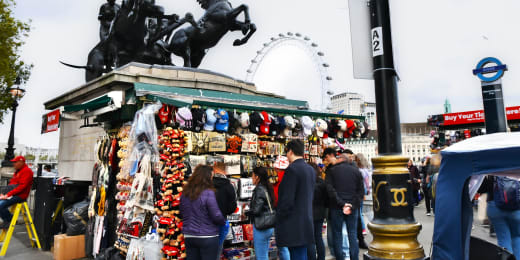
The number of must-see attractions in London is almost endless. The length of your stay will determine how many you get to cross off your list, but some of the most popular include The Tower of London, Big Ben, Trafalgar Square, Buckingham Palace, Westminster Abbey and London Bridge. There's also Oxford Street for shopping, SoHo for food and drink, the West End for culture, endless parks, winding streets and some of the world's most unique characters.
If you're looking for the best way to see England's capital on foot, check out our London City Walking Tour page.
The quickest way to get around London is onboard the London Underground. Using their Pay as You Go system is the best option here, as you will only pay for the journeys you make. Getting a London Black Taxi is worth the experience alone, but it can be pricey. If possible, and the weather is not too bad, taking a walk around London is a great way to experience this fascinating city.
Located in central London, The British Museum is the United Kingdom's most popular museum, attracting close to 6 million visitors per year. First opened in 1759, it now stands as one of the oldest museums on the planet. Within its walls, you can find some of the most important artefacts of human history.
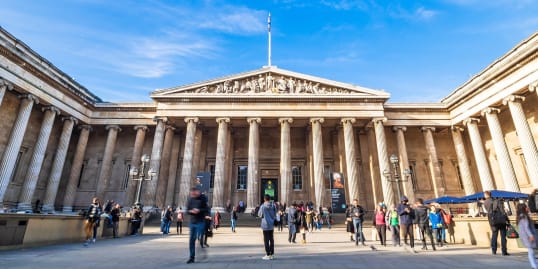
Some of the museum's most popular pieces include two large stone figures from Easter Island and the Benin Bronzes (a selection of sculptures from the West African Kingdom of Benin). And, most controversially of all, The Elgin Marbles (a series of marble architectural decorations taken from the temple of Athena, in Greece). The marbles were created between 447 and 432 BC, and are frequently a source of friction between the Greek government and The British Museum. While Greece was their original home, the British Museum say that they helped avoid their certain destruction in the 19th century — while Greece was under the rule of the Ottoman Empire.
There are over eight million objects in the museum, about 80,000 of which are on display at any given time. With such staggering numbers, it's usually best to focus on a specific gallery, or theme, or opt for a guided tour. Buying a visitor's guidebook on-site is also a great way to map out your exploration. The Enlightenment Gallery is also a good place to start as it gives a breakdown of the museum's wider historical origins.
You could easily spend the entire day here, but to see the highlights on display, you should budget about 3 to 4 hours in total. This can be a lot of walking, so ensure that you take plenty of breaks. You'll be able to step out for fresh air or a cup of coffee throughout your visit — so long as you hold onto your ticket.
From Saturday to Thursday, The British Museum is open from 10.00am to 5pm, and on Fridays from 10.00am to 8:30pm
The British Museum is free to enter.
The iconic dome of St Paul's Cathedral has graced the London skyline since 1710. The site was once a pagan place of worship and has been a religious sanctuary for over 1,400 years. The structure we see today has survived the Blitz's Luftwaffe of World War II, and, before London's skyscraper boom of recent years, it stood as the tallest building in the city until 1963.
An earlier version of St Paul's Cathedral was destroyed by the Great Fire of London in 1666. And, under the guidance of one of the world's most revered architects, Sir Christopher Wren, the cathedral was rebuilt to its current glory. In 1981, St Paul's Cathedral was the location for the wedding of Charles, the Prince of Wales to Lady Diana Spencer.
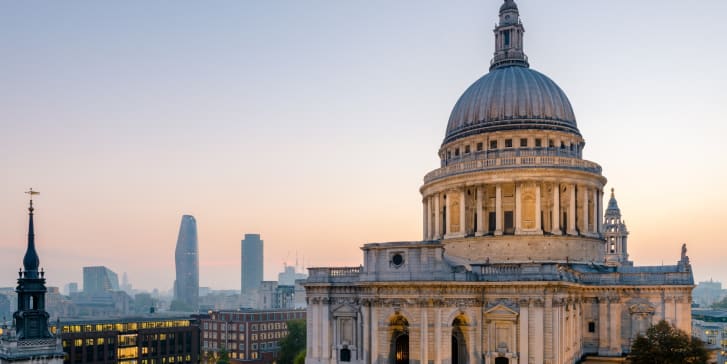
The highlight of a tour of St Paul's Cathedral is the magnificent dome that sits on top. Having been inspired by the Vatican's St Peter's Basilica, Christopher Wren replaced the cathedral's former tower with what is today regarded as one of London's most recognisable landmarks. As you climb towards the dome, 527 spiral steps in total, and take in the breathtaking views of London, the genius of Sir Christopher Wren comes to the fore. There is a touching monument to Wren in the crypt below the cathedral, as well as a memorial to around 300 historic figures from Britain's past, including Horatio Nelson and the Duke of Wellington.
For access to areas of the cathedral, usually inaccessible to the public, you'll need to join a tour. This can be via a guided tour, or a self-guided tour with audio. The guided tour is probably the best to take in all that the cathedral has to offer, as the tour guides are full of little nuggets of info that may otherwise be missed.
Please note, photography of any kind is not allowed inside St Paul's Cathedral. Much of the cathedral is easily accessible by all, but the dome can only be reached via its 527 spiral steps and is not suitable for those with mobility issues, or those with a fear of heights and confined spaces.
On Monday, Tuesday, Thursday, Friday and Saturday, St Paul's Cathedral is open for sightseeing from 8.30am to 4:30pm, and on Wednesday from 10.00am to 4pm — on Sunday, the cathedral is open for worship only.
Prices of a ticket to tour St Paul's Cathedral range from £20.50 for an adult to £9 for a child.
Entrance is free if you are attending a a service at the church, but all areas, away from the pews, are restricted.
Located on the northern banks of the River Thames, The Tower of London is home to some fascinating, and chilling, stories of England. Throughout its time, it has been a royal palace, treasury, mint, armoury, and even a zoo, the Tower is perhaps most renowned for its role as a notorious prison, where monarchs and nobles, including Henry VIII's ill-fated wives, Anne Boleyn and Catherine Howard, met their tragic ends.
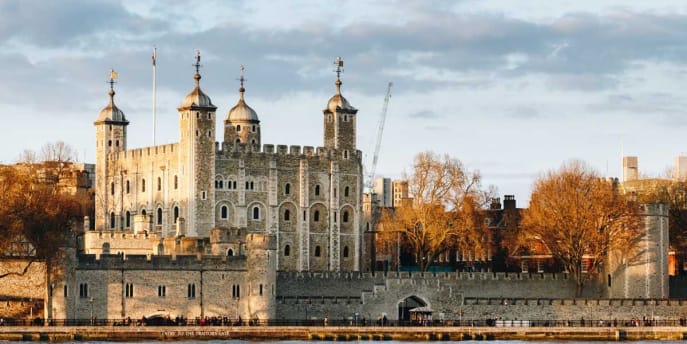
The main attraction here is the Crown Jewels, featuring the world's largest diamonds, and protected by their live-in guards the Yeomen Warders, more commonly known as Beefeaters. The Tower is also home to a somewhat more important resident, a flock of ravens. It is said, that should ravens no longer live within the grounds, the British Kingdom will crumble. To avoid such a fate, there are spare ravens kept in the aviary — with their wing feathers clipped to make doubly sure!
You are free to wander through the tower however you please. But, you can also be guided by one of the Beefeater guards, which is included in the admission fee. This is a more rewarding experience, especially if it's your first visit. They have all the tower knowledge you need, and make sure you get to see its highlights.
A particular, if somewhat grim, highlight within the grounds is seeing the ravens at feeding time. They are given raw meat and blood-soaked biscuits daily. You can ask the Beefeater guards when the next snack time is if you fancy sneaking a peek!
As the Tower of London is a popular attraction all year round, the best way to avoid the queues is to order your ticket online, try to get there first thing in the morning and avoid weekends!
On Mondays and Sundays, The Tower of London is open from 10.00am to 4:30pm — with the last entry at 3:30pm.
On Tuesday to Saturday, The Tower of London is open from 9.00am to 4:30pm — with the last entry at 3:30pm.
Please note, opening hours may vary during school holidays.
Prices of a ticket to The Tower of London range from £33.60 for an adult to £16.80 for a child. Entry for children under 5 is free.
Standing 350 feet above sea level, the White Cliffs of Dover have been a symbol of British hope and freedom for centuries. Offer a striking contrast with layers of wild, green grass above, these cliffs consist of soft, white, finely-grained limestone — formed over millions of years. They are located on the southeast coast of England, 2 hours and 15 minutes from London. The cliffs hold historical significance, having witnessed numerous invasion attempts, from Julius Caesar in 55 BC to the Nazis in the second world war.
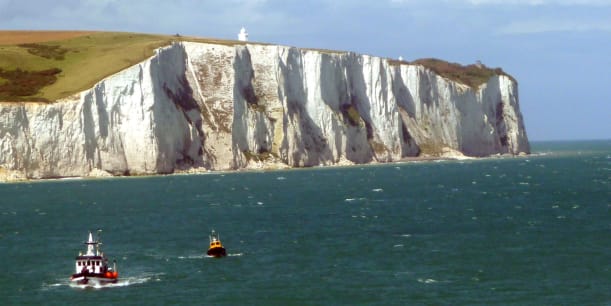
The White Cliffs of Dover Visitor Centre is located on the site of an old prison. The prison was originally built in 1883, once Britain stopped sending its convicts to its colonies. The government at the time needed somewhere to house its prisoners, as well as to store its fleet of ships on the southeast coast. Killing two birds with one stone, they founded a prison here and used its inmates to build the Port of Dover.
From the visitor centre, you can access the Lighthouse and the Fan Bay Deep Shelter — a series of now-abandoned tunnels built during World War II, as a storage system for the gun battery located above.
While a walk along the White Cliffs of Dover is an amazing experience in itself, to see them in their full glory, you'll have to see them from the sea. Dover Sea Safari offers an hour and a half long cruise along the cliffs, and costs £40.
The pathway along the White Cliffs of Dover is managed by the Nation Trust and is very safe to walk along. Please be warned, that there are areas of the cliffs, off this pathway, that can be extremely dangerous to enter and should not be accessed. The official path loops back on itself and takes an hour and a half to complete.
While the northeast of England is relatively sparse when it comes to notable landmarks, one has stood out since 1093 — Durham Cathedral. The area's other landmark of note, the Angel of the North, wasn't erected until 1998. Durham Cathedral is located a 25-minute train ride from Newcastle City, and is seen today as one of the world's most beautiful examples of Romanesque Anglo-Norman Architecture. Durham Cathedral was the first English Cathedral to be added to the UNESCO World Heritage Site list.
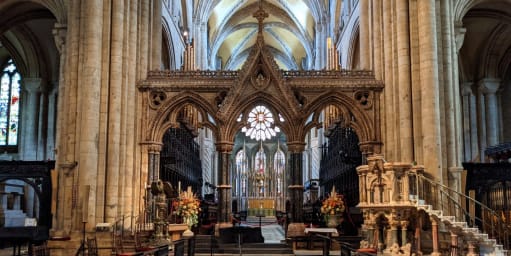
Within the cathedral, you'll get to see the exquisite stone Neville Screen, the final resting places of St Cuthbert and St Bede, the western and central towers as well as take in some of the most breathtaking views of County Durham. The one-hour tour of the cathedral is hosted by one of the expert volunteer guides, and they'll give you the full 1,000 history of the building, as well as take you on an exploration throughout it.
If Durham Cathedral is on your list, but it's not one that your kids are crying out to see, you can let them know that parts of the cathedral were used in the filming of the first Harry Potter film (the Philosopher's Stone). Please note, that this will only work if your kids are of a certain age and/or Harry Potter fans.
As much of the tour takes place in the cathedral's western and central towers, which involves climbing some very steep and winding stairways, it is not suitable for visitors who have mobility issues.
From Monday to Saturday, Durham Cathedral is open from 10.00am to 4pm, and on Sundays from noon to 4pm.
Admission to Durham Cathedral is free. Prices for Durham Cathedral's guided tour are £7.50 for an adult and free for those under 18.
First erected in 1894, and open to the public on the 14th May that year, Blackpool Tower was, at the time, the tallest manmade structure in Britain. Taking its inspiration from The Eiffel Tower, which opened in Paris five years earlier, Blackpool Tower was the brainchild of John Bickerstaffe, the former mayor of Blackpool. Standing at 519 feet, the tower can see from as far away as the Lake District and Wales.
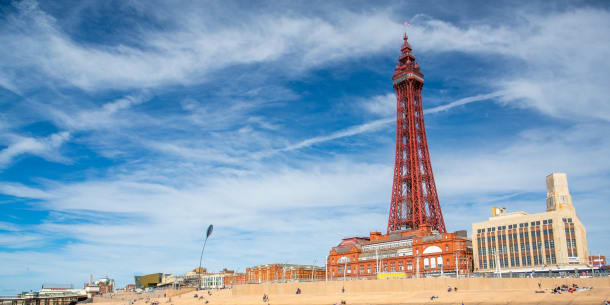
A visit to the tower today includes a variety of different things to see and do, including a trip to its iconic 19th-century ballroom. With its stunningly decorated ceiling, vintage balconies and unique sprung dance floor — an evening here showcases British glitz and glamour at its finest. You can also take the Blackpool Tower Eye tour, ascending the tower and onto its dizzying SkyWalk, a thick glass viewing platform that offers views across the Irish Sea. Blackpool Tower also offers conferences and meeting spaces for large rooms, as well as magic shows, circuses and even mini-golf.
Entry is valid for the whole day, so feel free to spend as long as you like in the tower, and pop in and out as often as you like.
Blackpool Tower operates a no-cash policy. All purchases made within the tower must be paid via a 'contactless' bank card. Tickets to Blackpool Tower are available online only, and booking in advance is essential.
Blackpool Tower is open daily from 11.00am to 5pm — except Saturdays, when it's open from 11.00am to 6pm
Prices of a ticket to Blackpool Tower vary depending on the event you are attending. Prices range from £7 (circus) to £50 (afternoon tea) per person.
Needing to lay down a marker of where the Roman Empire ended and the wild unknown began, Emperor Hadrian began work on his bricked namesake in 122 AD. Hadrian's Wall today is a ruin of ancient temples and crumbling forts stretching 73 modern miles across England from the coast of the Irish Sea in the west to the coast of the North Sea in the east. Contrary to popular belief Hadrian's Wall does not act as a border line of England and Scotland, as Scotland is a further 65 miles north of the wall. The wall was awarded Unesco World Heritage Status in 1987.
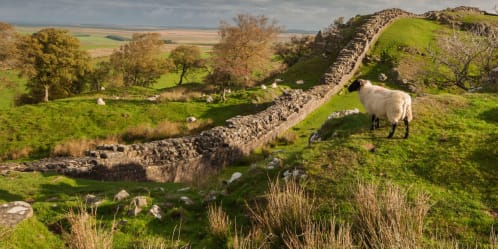
Some of the best-preserved features of Hadrian's Wall include Chesters Roman Fort, a Roman cavalry fort designed to protect a bridge crossing at River North Tyne. Heading to the west you can see what is possibly the first non-Roman structure built along the wall, Hexham Abbey was built during the 7-century incorporating stones originally brought to the area by the Romans for building their forts. And, further to the west again is Homesteads' Latrines, an amazingly complex and well-preserved communal toilet once used by Roman soldiers.
As you wander along Hadrian's Wall, you may find some very enthusiastic and helpful guides along the way, at some of the more popular spots. They will appreciate and answer, to the best of their ability, any questions you may have about the area.